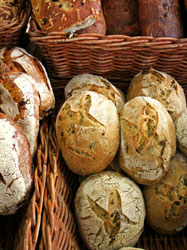Food spoilage studies for novel processing methods
In the wake of increasing popularity of processed foods, it is essential that the interests of the consumer are met, not only in terms of quality but also safety. New refinements in techniques for food preservation are constantly being developed including the use of high pressure, low temperature (HPLT) for freezing. The use of high pressure during freezing can create a higher quality food product. Researchers in the European project, SAFE ICE investigated the scientific and technological hurdles related to this process. As part of the consortium, scientists at Unilever in Holland investigated the viability of two important microorganisms that cause food spoilage. The first, Bacillus subtilis (B. subtilis), is an important model microbe. By itself, it can induce 'ropiness' in bread products which is a soft, stringy brown mass that smells of fruit. Scientists at Unilever in Holland observed B. subtilis using flow cytometry, staining techniques and membrane permeability to assess damage to the cells. The microbe showed heterogenous resistance to the HPLT treatment. The researchers discovered the range of pressures combined with -25°C that were most likely to cause inactivation in B. subtilis. Lysteria monocytogenes, responsible for listeriosis, was also studied. As an important and highly dangerous pathogen, it was observed under different conditions in one of its habitats, smoked salmon. The synergistic effects of high pressure processing, subzero temperature and varying pH were monitored. The ultimate goal of the project was to develop process and product technologies during the phases of freezing, thawing, chilling and storage of HPLT processed foods. Viability data for food spoilage organisms under these conditions will provide a basis for continuing the production of safe, high quality food for consumer protection.

